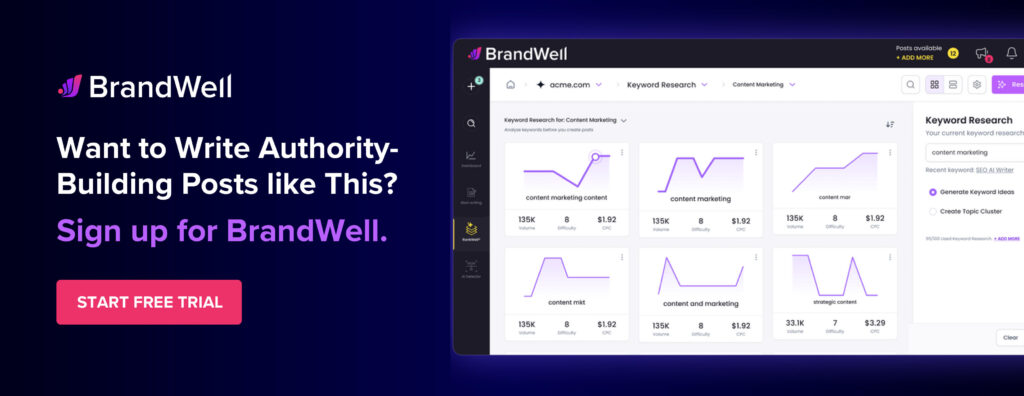Discover top guides, trends, tips and expertise from AIO Writers
How to Get Free Backlinks for Your Blog: 10 Proven Tips
Farnaz Kia
Thursday, 6th Jul 2023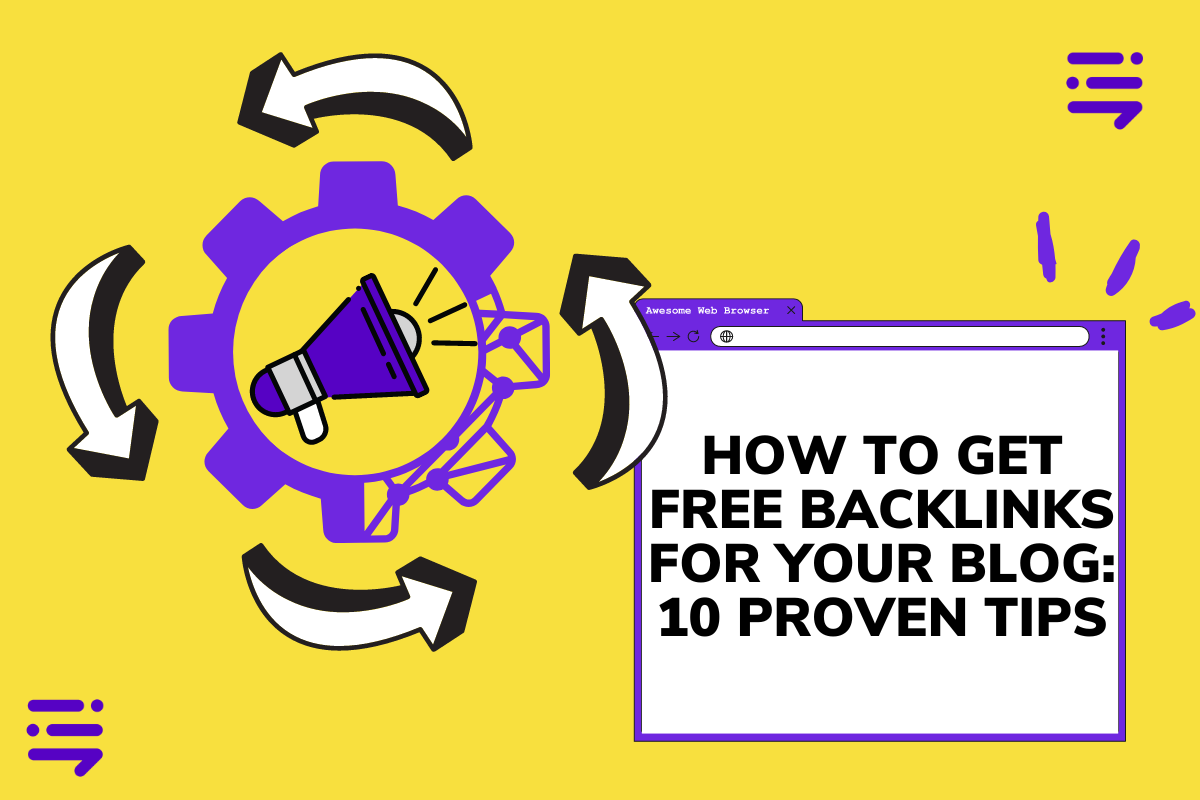
Ever wondered how to get free backlinks for your blog?
You’re not alone.
The quest for quality, free backlinks is a common struggle among website owners and SEO enthusiasts alike.
But why are they so important?
Well, in an off-page SEO strategy, backlinks act like votes of confidence from other websites.
The greater the number of powerful backlinks from respected sources, the higher your website will be positioned in search engine results.
Unfortunately, link building is the hardest part of search engine optimization. No wonder 95% of online content has zero backlinks.
In this comprehensive guide, we’ll introduce you to the world of earning backlinks and explore various methods to acquire them without spending a dime.
You will learn:
- The benefits of backlinks.
- The different types of backlinks.
- Proven tips on how to get free backlinks for your blog.
By implementing these strategies consistently, you can establish a robust network of quality backlinks that will boost your blog’s visibility in search engines.
Table Of Contents:
- What are Backlinks?
- Types of Backlinks
- The Importance of Backlinks for Your Blogs
- How to Get Free Backlinks
- Bonus: The Skyscraper Technique
- Beware of Black Hat Backlinking Techniques
- FAQs – How to Get Free Backlinks for Your Blog
- Conclusion
What are Backlinks?
A backlink, also known as an inbound link or incoming link, is a hyperlink from one website to another.
When another site or article includes a link to your blog, that is considered a backlink for you — an inbound connection. Search engines like Google use these links as signals when determining how relevant and authoritative your content is compared to others within the same niche.
Types of Backlinks
There are two main types of backlinks: dofollow and nofollow.
- Dofollow links: These are standard hyperlinks that pass SEO value (also known as “link juice”) from the linking page to the linked page. Dofollow links contribute positively towards improving search engine rankings.
- Nofollow links: Nofollow links have an attribute (
<a href="URL" rel="nofollow">) that tells search engines not to consider them when calculating SEO value or ranking positions. While they don’t directly contribute towards improving search engine rankings, they can still bring valuable referral traffic and diversify your overall link profile.
The Importance of Backlinks for Your Blogs
The importance of having quality backlinks cannot be overstated. Here’s why you should build backlinks as soon as you start your blog.
- Increase in Organic Traffic: When your blog is linked to other authoritative websites, it increases the chances of people discovering and visiting your site through those links.
- Improved Search Engine Rankings: High-quality backlinks signal to search engines that your content is valuable and worth ranking higher in search results. This can lead to better visibility for your blog on platforms like Google, Bing, and Yahoo.
- Referral Traffic: Backlinks not only improve your website’s visibility in search engines but also bring direct referral traffic. When a user clicks on a link from another website to yours, they are referred to your site, potentially increasing your site’s traffic and exposure.
- Indexing and Crawling: Backlinks help search engine crawlers discover new pages on your website. When a crawler follows a link from another site to yours, it can index your pages more quickly and thoroughly, improving your overall site visibility in search results.
- Anchor Text Optimization: Backlinks often include anchor text, which is the clickable text in a hyperlink. Optimizing anchor text with relevant keywords can help improve the ranking of the linked page for those keywords.
- Establish Authority: Earning backlinks from reputable sources helps establish you as an authority within your niche. This credibility can attract more readers, social media shares, and even additional backlinks over time.
- Relationship Building: Building backlinks often involves reaching out to other website owners, bloggers, and influencers within your industry. This process can help you establish relationships and partnerships that can lead to further opportunities for collaboration, guest posting, and promotion.
In the following sections, we’ll explore 10 proven strategies for obtaining free backlinks for your blog to boost its organic traffic growth.
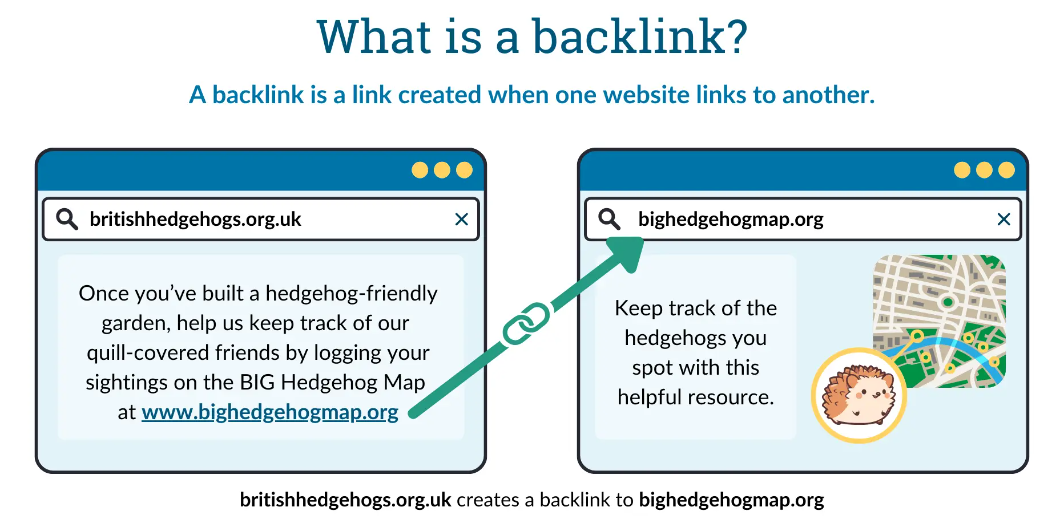
Image source: Moz
How to Get Free Backlinks
Learning how to create backlinks is crucial for improving your search engine rankings and bringing more visitors to your site.
To truly learn how to get free backlinks, you must understand one principle: Backlinks are never 100% free. You need to earn them with amazing content.
With that in mind, here are 10 proven strategies on how to get free backlinks for your blog.
1. Guest Post
Guest posting involves writing articles or blog posts for other websites in exchange for a link back to your own site. Guest post writing can provide a double benefit – not only does it generate quality backlinks, but it also gives your content the chance to be seen by new people, thus potentially increasing its reach.
How do you write as a guest blogger?
- Find blogs that are popular within your niche that accept guest posts.
- Create unique, engaging content tailored specifically for their audience.
- Contact the website owner with a pitch outlining the topic and key points of your proposed post.
Need help with writing guest posts? BrandWell can write any type of content on any topic! Just enter your keyword and it will generate an original, research-backed blog article in 5-10 minutes.
2. Create Quality Content and Share It Online
Blog posts containing 1,000+ words consistently receive more backlinks than short-form content, making long-form content a crucial tool in generating backlinks.
The foundation of any successful link-building campaign is creating high-quality, shareable content that people want to link to naturally. Some tips include:
- Focusing on evergreen topics relevant to your industry or niche.
- Incorporating original research, data-driven insights, or expert opinions into your content pieces.
- Promoting quality content through social media channels like Twitter and LinkedIn groups related to your industry/niche.
Wondering why list-based articles and how-to guides are so popular? It’s simple: they’re engaging, easy to digest, and shareable.
Plus, they’re an effective tool for attracting free backlinks.
List-based articles, or “listicles”, break down information into bite-sized chunks that readers can easily understand.
A well-crafted listicle can be a goldmine for backlinks as other sites may reference your lists in their own content.
Meanwhile, “how-to” guides provide step-by-step instructions on how to do something specific and are highly valuable because they help your readers solve problems directly.
The more value you provide with these guides, the higher the chances of getting linked by other websites looking to provide useful resources to their audience too.
3. Reach Out to Influencers in Your Niche
One effective way to create backlinks is by reaching out to influencers within your niche. These influencers boast a sizable following on their blogs and social media accounts, carrying with them the potential to share your content with a wide-reaching crowd. To do this:
- Identify the top influencers in your industry who share similar content as yours.
- Create a personalized email pitch explaining why their audience would find value in reading or sharing your post.
- If possible, offer them something valuable in return (e.g., promoting their content).
You may also consider using tools like BuzzSumo or Ahrefs Content Explorer which allow you to discover popular articles within specific niches and identify potential influencers who might be interested in linking to or sharing your content.
4. Implement Broken Link Building Tactics
Broken link building is another effective strategy to build backlinks without spending any money. This technique involves finding broken links on other websites related to your niche and offering the webmaster an alternative resource (i.e., one of your blog posts) as a replacement for the dead link. Here’s how it works:
- Find blogs and websites in your niche and look for broken links using tools like Dead Link Checker or the Check My Links Chrome extension.
- If you encounter a link that’s no longer working, see if there’s a related blog post of yours that could be used as an alternative.
- Contact the website owner and inform them about their dead link — they will surely appreciate your helpfulness.
You could suggest replacing the broken link with one of your own relevant pages as a solution.
- Write an email that’s professional yet friendly. No one likes being lectured by strangers on the internet.
- Avoid spamming website owners with requests. Instead, provide value by suggesting useful alternatives that enhance their content quality.
- If you find multiple dead links pointing to a single source that’s no longer available, consider creating similar content on your site. Then reach out to all those sites linking to the unavailable resource. This strategy known as The Moving Man Method can result in multiple high-quality backlinks at once.
- Treat every broken link as an opportunity for building new relationships and earning valuable backlinks.
The Moving Man Method not only helps you generate backlinks for free but also provides value to other website owners by helping them fix their dead links.
5. Take Advantage of Resource Pages
Resource pages are curated lists of useful resources within specific niches. These pages can be goldmines for acquiring powerful backlinks since they’re designed to provide valuable information to visitors.
To leverage resource pages and start generating backlinks:
- Search for relevant resource pages in your niche using search queries like “your keyword + resources” or “your keyword + helpful links.”
- Analyze each page’s content and determine whether one of your blog posts would make a good addition to their list.
- Contact the owner of the resource page via email, introduce yourself, explain why your content is valuable for their audience, and request inclusion on their list.
Note that this method may require some persistence. However, getting featured on popular resource pages can result in numerous powerful backlinks pointing to your blog.
6. Create Visual Content
Infographics are a powerful tool for generating external links because they present complex information in an easy-to-understand, visual format.
To create infographics, use free online tools like Canva or Easel.ly. Once you have created an infographic, share it on social media platforms and submit it to infographic directories such as Visual.ly, which can lead to valuable external links from other websites that find your content useful.
7. Generate Backlinks from Webinars
Webinars offer another way to build high-quality backlinks with minimal effort. By hosting informative webinars related to your niche, you not only provide value but also increase the chances of attendees sharing the webinar link on their blogs or social media profiles.
Platforms like Zoom Webinar and GoToWebinar make hosting webinars simple and affordable. Participating in online discussions and forums that are relevant to your industry is another effective method to build high-quality backlinks.
Websites like Quora and niche-specific forums provide opportunities to answer questions, share your expertise, and include relevant links to your blog in the process. Remember to always add value to the conversation and avoid spamming with self-promotional content.
8. Monitor Backlinks Regularly
Regularly monitoring the performance of your external links will help you identify any issues or opportunities for improvement. Use tools like Ahrefs, Moz Link Explorer, or SEMrush Backlink Analytics to track key metrics such as domain authority, anchor text distribution, and referring domains. This information will allow you to make informed decisions about which links need attention and which strategies are working well.
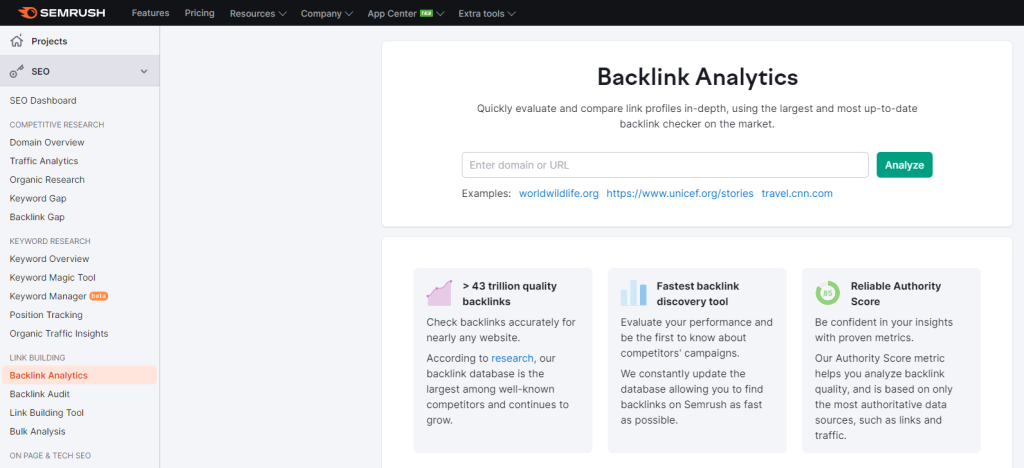
Screenshot of Semrush Backlink Analytics
9. Update Old Content with Fresh Links
Your older content may still be valuable but might have outdated or broken links that could harm its SEO value. Periodically review your old posts and update them with fresh links pointing to relevant resources or newer articles on similar topics within your site. This not only improves user experience but also signals search engines that your content remains up-to-date and valuable.
- Create a schedule: Set aside time every few months to update old content with new links.
- Prioritize high-traffic pages: Focus on updating popular pages first since they likely contribute more significantly to overall website traffic.
- Audit internal linking structure: Ensure that your internal links are well-organized and point to the most relevant content on your site.
10. Engage with Existing Link Partners
Maintaining relationships with websites that have already linked to you is crucial for long-term link-building success. Engage with these partners by:
- Sharing their content on social media or mentioning them in blog posts.
- Sending occasional emails thanking them for linking to your content and suggesting new collaboration opportunities.
- Offering exclusive resources, such as infographics or case studies, which they can use in their own content (with a link back to your site).
This ongoing engagement not only helps maintain existing backlinks but also opens up possibilities for future collaborations and additional high-quality linkbacks from trusted sources.
Bonus: The Skyscraper Technique
The Skyscraper Technique is a powerful method to generate high-quality backlinks for your blog. It involves finding popular content within your niche, creating something better, and then reaching out to the right people.
To start with this technique, you need to find blogs or articles that have already earned a significant number of backlinks. Tools like Monitor Backlinks can help identify these pieces of content. Look for posts that are relevant to your blog’s topic and note down what makes them successful.
The next step is to create an even better version of these successful blog posts. You could add more depth, use up-to-date information, improve the design, or provide a more comprehensive guide than what currently exists.
Now that you’ve created superior content, it’s time to share it! Reach out via email or social media and offer website owners a chance to link back from their own websites or personal blogs.
Finding email addresses, crafting personalized messages, and being persistent (without spamming) will increase your chances of earning those coveted free backlinks.
Beyond direct outreach, you can also try finding guest blogging opportunities. You can build relationships while also generating quality links by providing valuable insights into other people’s websites through guest posts.
Although this process might be time-consuming, keep in mind that search engines love high-quality anchor text linking between different sites — making all your efforts worth it when you’re trying to rank higher.
Remember: always focus on value first before expecting any external links in return!
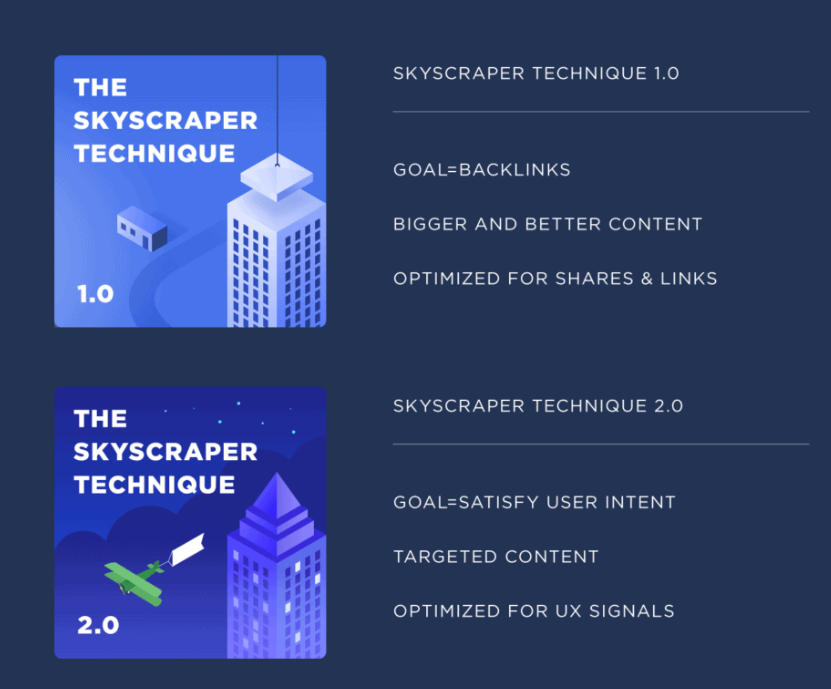
Screenshot from Backlinko
Beware of Black Hat Backlinking Techniques
In the world of SEO, it’s crucial to understand what constitutes ethical practices and what falls under the umbrella of ‘black hat’ tactics. Black hat backlinking techniques refer to strategies that violate search engine guidelines, specifically those related to building high-quality backlinks.
One common black-hat technique is purchasing links from people’s websites or niche websites. This goes against Google’s policy as these links aren’t earned but bought, which can lead to penalties if discovered.
The use of irrelevant anchor text in external links is another frowned-upon practice. The anchor text should accurately represent the content being linked. Misleading users with inaccurate descriptions can negatively impact user experience and may be penalized by search engines.
Another unethical way to generate free backlinks is through spamming blog comment sections with their website link. This approach not only annoys other users but also risks getting flagged as spam by search engines.
Another risky method involves creating multiple personal blogs or pages on social media platforms solely for linking back to your main website — known as a link network. While you might initially see an increase in traffic, this tactic often leads to significant drops when detected by search algorithms.
To build high-quality backlinks ethically, focus on generating valuable content that others naturally want to link to because they find it useful or interesting.
Remember, in the SEO game, patience is key. It takes time before seeing results from any given link building, but once they start coming up, it’s worth every effort made.
FAQs – How to Get Free Backlinks for Your Blog
What is the most effective way of building backlinks for free?
The most effective way of building backlinks for free is by producing top-notch content that naturally attracts links from other websites. Share this content across various channels like social media, online communities, and forums related to your niche.
What is the easiest way to get backlinks?
The easiest way to get backlinks is through leveraging existing relationships with industry peers or influencers who may be willing to link to your content if they find it valuable. Participating in relevant online communities or forums can also lead to easy opportunities for gaining natural links as you provide helpful information within those spaces.
How do I rank my blog without backlinks?
Ranking your blog without relying solely on backlinks involves focusing on other SEO factors such as keyword optimization, user experience (UX), site speed, mobile-friendliness, schema markup implementation, and consistent production of high-quality content tailored towards satisfying searcher intent.
Conclusion
These 10 effective strategies on how to get free backlinks for your blog can help you get the word out there and invite other authors to link back to you. To ensure the best results, use strategies such as guest blogging, broken link building, content creation, and social media outreach.
Additionally, focus on creating quality links by using anchor text that accurately reflects your page’s content.
Lastly, maintain high-quality links through regular monitoring of link profiles and removal of any outdated or irrelevant ones. By following these tips you can get free backlinks for your blog quickly and improve your search rankings.

UNLOCK YOUR POTENTIAL
Long Headline that highlights Value Proposition of Lead Magnet
Grab a front row seat to our video masterclasses, interviews, case studies, tutorials, and guides.

